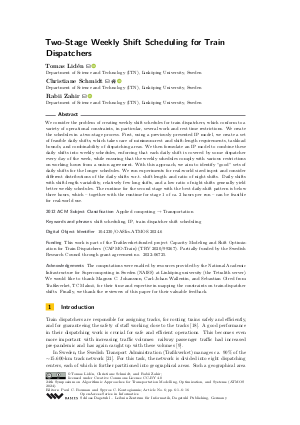OASIcs.ATMOS.2024.6.pdf
- Filesize: 1.12 MB
- 16 pages

 Creative Commons Attribution 4.0 International license
Creative Commons Attribution 4.0 International license
















Feedback for Dagstuhl Publishing